“Even the most expert experts could not have predicted Trump’s election. Or at least no one
expected it.”
Art in the United States and the world related to it, as evidence of the synchronous times, reveals a change both in its market behavior, as in the change of formal manifestations and new ways of manifesting a disconformity. About the current situation in the United States, and how being the greatest power in the world is impacting on society and the current paradigms is that we talked with the art critic and Chilean curator based in New York, Christian Viveros-Fauné.
By Carolina Martínez Sánchez
The election and Trump’s presidency seems to blur and expand the extreme reaches of present times. One where the postmodernism is facing the worst crisis: the sensation of living in a delirious system built by the worst socio-political-cultural predictions, showing an apocalyptic paradigm where command the cult of individualism, the alienation of people confiscated from consumerism that reveals the image as the gravitational axis of human behavior.
Migration and the Wall, which are undoubtedly themes and policies that are like phantom fascists who are achieving a setback in humanity that already seemed in another stage, is not only where the vision of Donald Trump is employing its powers.
Art in the United States and the world related to it, as evidence of the synchronous times, reveals a change both in its market behavior, as in the change of formal manifestations and new ways of manifestig a disconformity. About the current situation in the United States, and how being the greatest power in the world is impacting on society and the current paradigms is that we talked with the art critic and Chilean curator based in New York, Christian Viveros-Fauné.
Of delusions. The before and after of a new fascism.
Even the most expert experts could not have predicted Trump’s election. Or at least no one expected it. And it is probably true that the triumph came with some important pitfalls. But the truth is that this has changed the world, and now it seems totally upside down.
As a consequence of that, everyone is reflecting on their values and the most basic ideas about what surrounds us, and where we are planted and what we have to do.
“The world of art is today with the obligation not to make politics only doors inside, but outside as well, which is another type of requirement.”
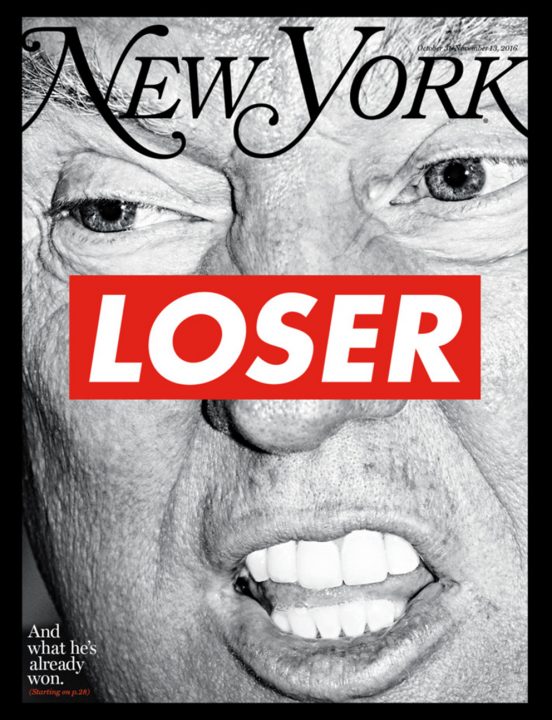
This represents a great dilemma, where being exhausted and tired is provoking a reversal of this situation. The dilemma of learning how to deal with an authoritarian and undemocratic situation means starting from scratch.
Of course in the world of art, which has a style very radical, but which has hardly been within its space, in its small niche, is today with the obligation not to make politics only doors inside, but outside as well, which is another type of requirement.
In that sense, the responses in general have been more than satisfactory, such as the Women’s March for the Inauguration day, for example, where Donald Trump’s Inauguration Day was basically dwarfed. Also like the protests that occurred when he gave the Muslim’s executive mandate to the 7 Muslim countries for the first time. They are antidemocratic, racist, and anti-religious norms.
“The battle against Trump must also be won within the cultural field.”
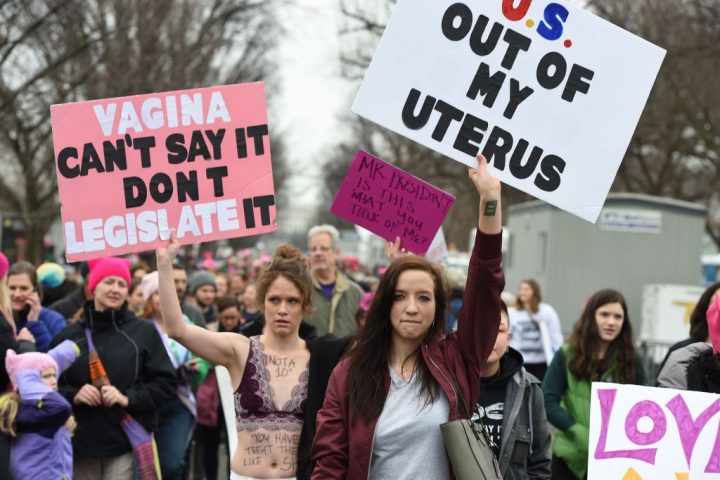
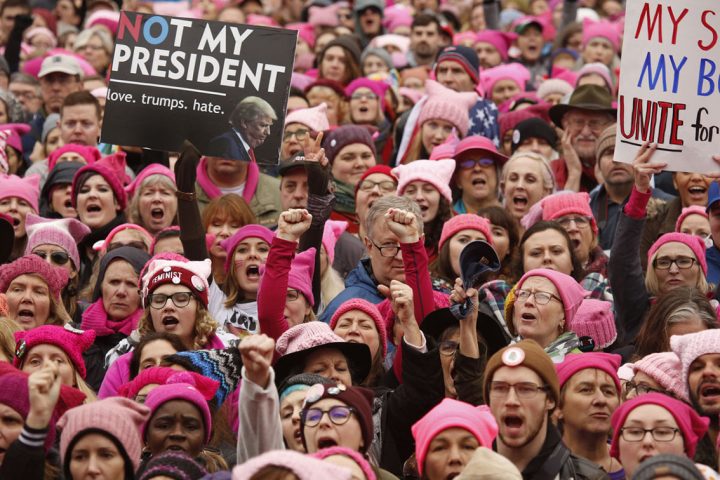
Is impressive what is happening; It was not known whether the population or institutions that remained were going to be able to oppose this authoritarianism. So far in one way or another if it has been possible, but we are only in the first months. This is just the beginning and unfortunately there is the fear and uncertainty that everything can be worse.
And the reason why that could happen, is because the president of the United States is a demagogue, is a kind of a Peronist project, but written in large print.
The difference is that everything that does and happens in the United States affects everyone.
What should be emphasized here is that Trump won basically thanks to a cultural argument: what prevailed in the elections were not his economic polices, social, defense, or whatever you want, but a purely cultural argument: ethnonationalism.
The approach was basically to capitalize not the economic dissatisfaction of the white, but their social dissatisfaction. The trumpian voter is not a voter who necessarily corresponds to that caricature of the middle-low white, because it has been demonstrated this voter represents to this target in all social classes. The point is that conservatives feel socially and culturally displaced and that’s why Trump won.
For this very reason I believe that the battle against Trump must also be won within the cultural field. Notice, for example, that a number of characters have emerged that never would had fit into American politics, are basically the version at the cube of what in the Reagan period we used to call “cultural warriors”.
Today’s extreme right is white-nationalist and Nazi, and when I say this, I do not it in extreme and metaphorical sense, but if we do investigate really, several of the characters close to Trump have been: ie, or are Nazis, Like David Duke or Richard Spencer, or are sympathizers of that thinking that I thought dead.
Among Trump’s aides and allies is his national security advisor, Sebastian Gorka, who is an intelligence analyst, professor and member of the National Security Advisory Staff, and for the Inauguration Day, he used a medal of his own of The Hungarian Order of Heroes, “Vitézi Rend” in Hungarian, a group that collaborated with the Nazi government during World War II. Gorka was involved for years in extreme right wing and anti-Semitic political organizations in Hungary, and is a sworn member of the surrender of “Vitézi Rend”. Once the controversy in the press unleashed against this medal, the assistant of Trump ignored the requests to comment on articles about this, and instead issued a denial.
This guy has not existed anywhere in the government until Trump came. Now that he has reached the highest levels of government, no one understands how a hard fascist has arrived there.
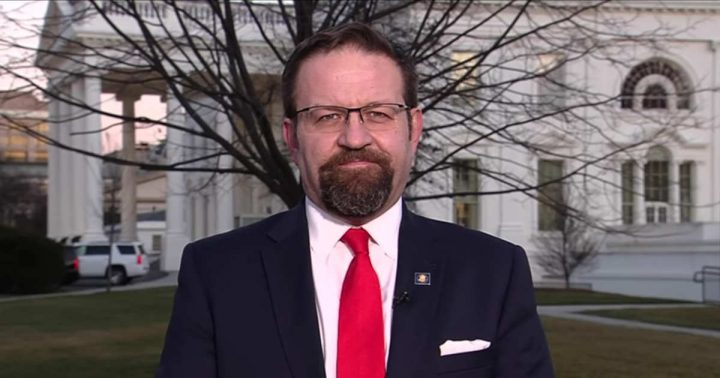
Besides, you have to Steve Bannon, Trump’s ideological right hand, and who is the second most powerful man in the world, after Trump of course. He is the Alt Right or Alternative right strategist, Breitbart’s founder and former CEO, a white propagandist (White natioanlist) website of alternative facts, which never before could have previously had access to a place at the Casablanca press table but today it shares a place alongside the New York Times, CNN, or Reuters.
The former editor of the same Bannon site, Milo Yiannopolous, fell out of favor not due he is anti-migrant, or because is racist, homophobic, himself being homosexual (!) But because he did something inexcusable for the right wing people, and it was supporting the sex between an adult and a minor, comments found on Youtube some time ago. If today he is fucked up, is for this reason and not and not because of his previous, high fascist caliber remarks.
This is the most extreme wing, but also within the Trump group, there is another one less extreme, but that should not be ignored. The Fascism of Pepsodent smile easily is the worst since you do not even notice when it tells you that the sun rises in the west and sets in the east.
Donald Trump has not only allowed this type of people to be part of his government, but has opened up a socio-cultural space that did not exist before. For this I say that United States at this moment is living a moment of alternative reality comparable with Netflix’s The Man In The High Castle: It is the world upside down.
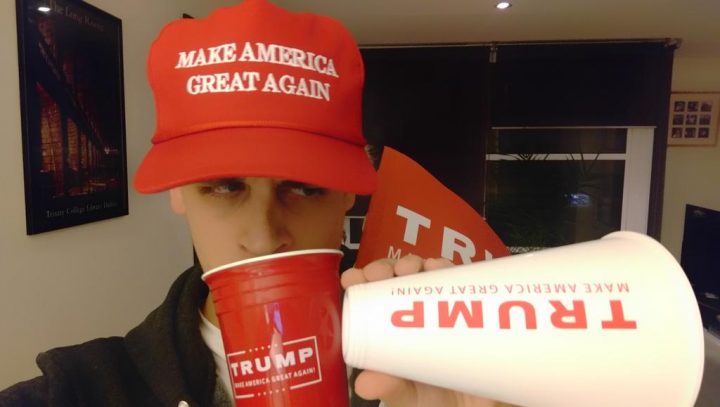
Carolina Martínez Sánchez: How would you describe the reaction of the art scene and its union as a slash that is explicitly against the Trump government, generating a response from the different shots of activism?
Christian Viveros-Fauné: I think the world of art has been relatively well mobilized, although at the moment there has not been a specific event for this world only where its reaction to the Trump government is demonstrated. I think it’s about to happen, among other things because Trump has just passed a proposal of the national budget in which not only wants to eliminate the corporation that finances the radios and public television, but also the NEA “The National Endowment for the Arts” and the NEH “The National Endowment for the Humanities,” which are the two institutions that deliver public money to the visual arts and humanities respectively.
This proposal came to light some time ago, but important actors and managers of the art and the institution issued official communiqués, such as that expressed by Tom Campbell, director of the MET Museum, and its President, Daniel Weiss. So what is expected is that the whole circuit can go with all its political allies against this to try to ensure that this elimination plan does not happen.
This is part of a cultural war and reminds me of the period of cultural warriors, a concept that is put back on the table in front of what is happening.
The 2017 Whitney Museum Biennial, which was on display from March to June this year, was presented as the first opportunity to give a broad, solid and functional response to Trump, although the show was not dedicated to him or anything like that. But for example there were two works that explicitly allude to it.
It could perfectly well have emerged as a more apolitical exhibition because it was organized between 2015 and 2016 mostly, but resulted in an exhibition that I believe is energizing and curiously serious. It took into account not only the art world, but what is beyond: polarizing politics, society, racial tensions, economic inequalities, and this refers to making external culture and is a good way to go.
“The 2017 Whitney Museum Biennial, which was on display from March to June this year, was presented as the first opportunity to give a broad, solid and functional response to Trump.”
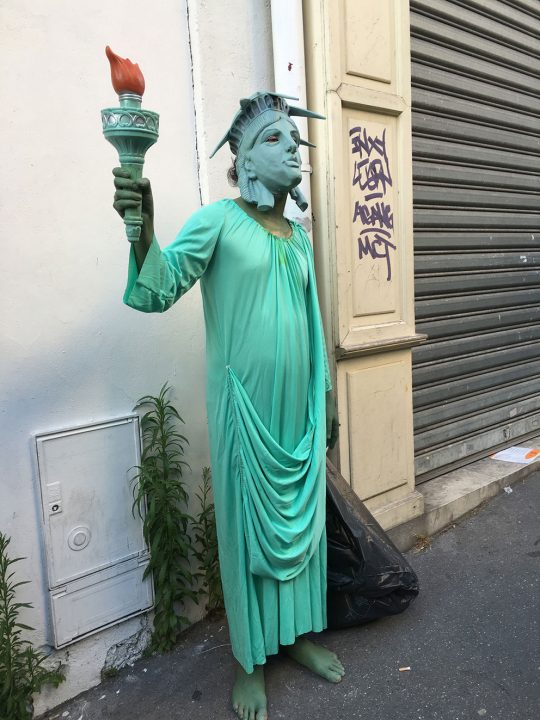
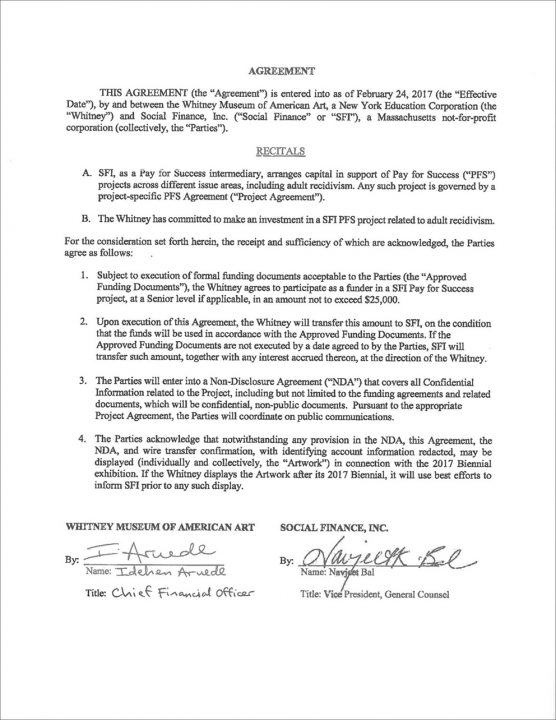
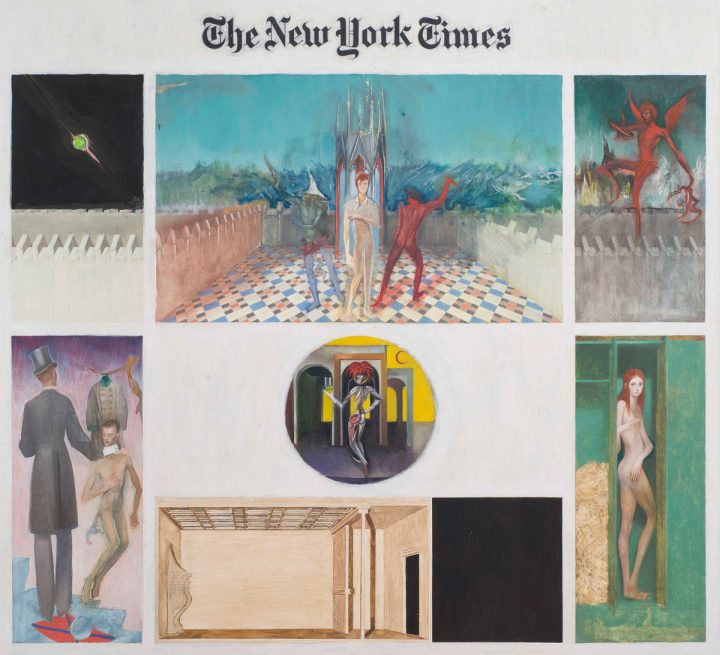
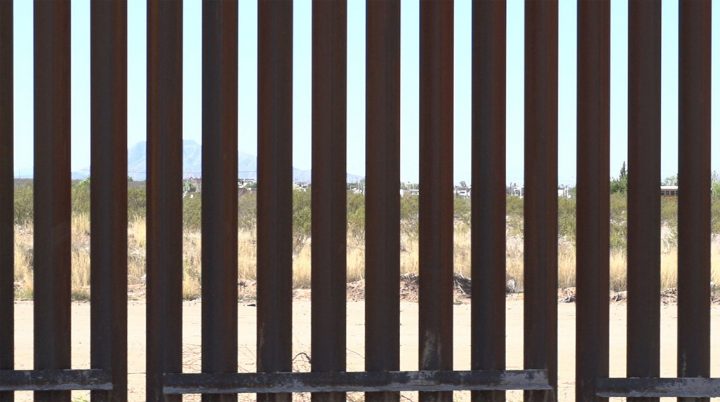
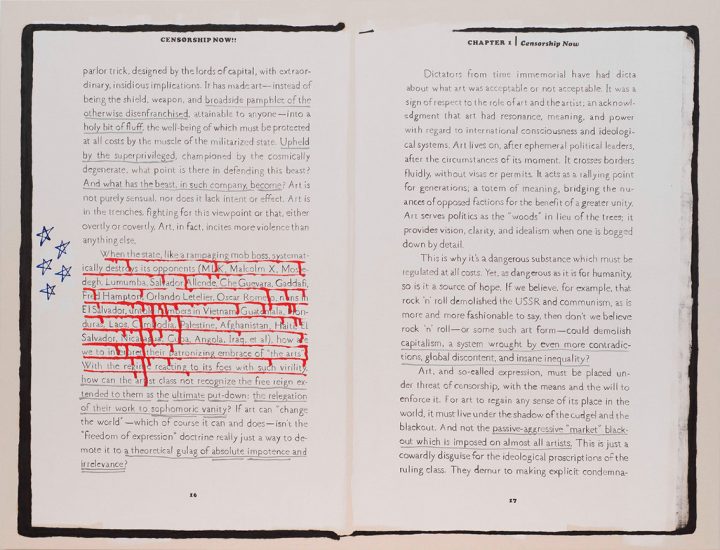
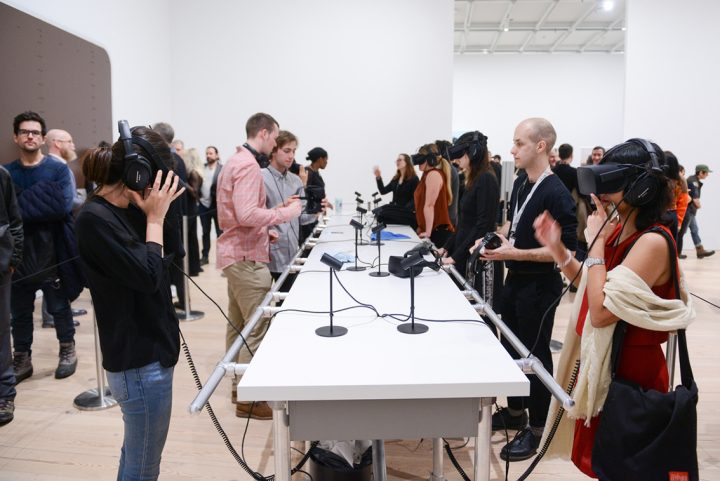
CMS: At first -as was speculated with Brexit- changes were projected in the art market, movement and transaction in galleries and art fairs. How real has this change been? Could we say that we are now really in the times where art is considered an asset?
CVF: One of the perspectives that was supposed to materialize with the possible victory of Trump was the arrival of a notion of disruption, that is, that both the art market and the stock market were going to be affected because Instability affects markets, and if the market is serious, it reacts to that instability. But quite the contrary, we’ve seen the stock market rising like foam. It seems that stability does not matter as much as the idea of a lower corporative tax, or lower taxes for those who have high incomes.
This effect has been reflected in the world of art in one way or another. Indeed the auctions in general are considerably lower than they were three years ago.
But if we consider them in the high spheres and that high range of interests, from today to one year ago, they are solid.
In front of this segment where everything seems to be going well, there has been a corresponding countercurrent to what people call the middle market, where it has been experiencing serious difficulties in the work. Bankrupting galleries, artists who increasingly find it difficult to sell, situation that arises because collectors have become speculators who are not worried about being collectors.
I would say that what is the ecology of art as a whole, in the highest ranks of the art market is still considered an “asset” and continues the investment. What involves money still runs well. The artworks that have less zeros are going worse than before.
CMS: What are the main effects or displacements at the symbolic level in the culture?
CVF: There are protests. The notion of politics. Or that the famous American comedy show Saturday Night Live that has been on air for years and that one year ago, nobody saw it, recovered a new life making fun of Trump, something that they are doing very well. That is just to give you an example how the culture has mobilized.
Last year, the then candidate and today president, was already the target of any comedian, and this has been intensified, among other things because Trump answers by tweets, and generates a direct confrontation by social networks between cultural agents and him.
The current situation is a chamber of echoes for this type of commentary, where political themes have become increasingly viable in art and other manifestations. That is, what was political before, now is much more, and what was not political, is thought upon, and what is not political under any circumstances, now in any museum in this country has a political charge: we are in another universe.
“What was political before, now is much more.”
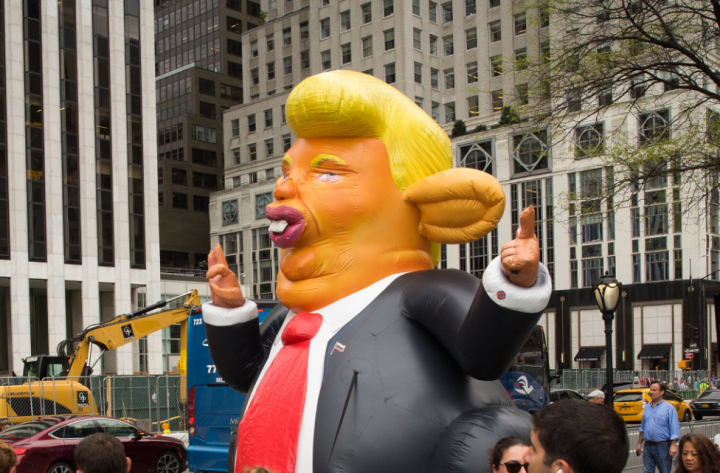
I went to all the big museums in New York just before and after the Inauguration Day and I could see all that difference in the exhibitions that have taken place after Trump, everything is still influenced and almost ginger colored by the fact that we are in this new reality. It’s like watching television one day after the state coup in Chile, everything changes, you see everything different. They have changed your reality.
I have had the bad luck to have this feeling three times in my life. The first was when I was nine with the September 11 coup in Chile in 1973, where I remember that things were different from one day to the next; then after 9-11 in the United States, where everything suddenly changed at a global level; and after the election of Trump, that by a devilish irony happened on the date 11-9.
We are in a different world right now, and you know it. The other thing that you know, or at least I have it very present, is that you are not living in flesh what is really happening. While you and I are talking, they are looking for immigrants and sending away from this country, entire families. If before it seemed that the law was what was worth or what was respected, now it is not. We are in full swing of Murphy’s law where things are worse than might have been expected, much worse.
In order not to be so bleak, we can also say that people have been able to organize and not only the people from art. Institutions like American Civil Liberties Union ACLU, or even the courts have behaved well, and have respected the law. But it is also possible that the fight can not be continued, it is not easy to oppose the greatest global force: the American executive is a Goliath.
An artist friend told me that this could be like the new ’60s, something that may sound ridiculous or absurd, but that gave him hope to see such level of mobilization, sincerity, seriousness and commitment.
We must take advantage of the crisis, and that was what Trump did indeed; the right usually knows how to get the juice from the times of crisis. I hope the American left learns this too.
CMS: Even before the election, it was possible to see a change in the aesthetic and artistic proposals, from the message and content to the formal, where criticism and a certain level of hopelessness, nihilism and unreality have flooded the different platforms of image display. Art, social networks, new positions and reflections. Is it a phenomenon that has been repeated in history and that will have its consequent change once again, or is it a restlessness that is installed?
CVF: One thing I found curious about, and I will use as an example the aforementioned Whitney Biennial, simply because it is the largest and most representative show that has been seen after the elections. It has been said that it is the last biennial of Obama, and that the biennial of Trump still does not take place. Or it is also said that it is the biennial of Hillary: the first and the only.
What has happened so far is in process of change, in transition and that is clear. This biennial was important in that it put a before and after to the use of activism in art, social connection and a new use of painting as well.
Something that was clearly seen in this exhibition – and I take it as a good example for what will be seen and what will come – is a greater militancy. I trust, that for good and for bad, the visual arts are going to fall in the mechanism of the politics and they are going to radicalize more and more. And that is normal. If it were not so, there would be a serious problem.
“I trust, that for good and for bad, the visual arts are going to fall in the mechanism of the politics and they are going to radicalize more and more. And that is normal. If it were not so, there would be a serious problem.”
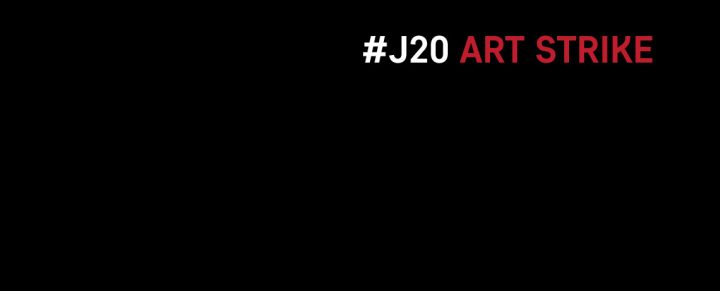
CMS: For the Inauguration Day on January 20, 2017, artists and art entities such as curators, galleries, museums and institutions, organized and joined in the J20 Art Strike, which gave winks and lines of what it could be the position to be keep in the time as a way of resistance. Do you think that this kind of actions only refers to raising the voice and leadership, rather than generating sustained resistance over time? It’s possible?
CVF: What is not possible is to do an Art Strike that is nothing more than a mere symbolic act, because for obvious reasons, it is not like carrying out a bus strike.
Actions that invoke resistance will continue from here on out as long as this guy remains in power. We’re going to see these kind of efforts more and more.
Talking about thist “call”, I think it was ridiculously ineffective, because a strike of artists or people of the art world, is not equal to the strike of bus drivers or Wall Street, the notion of strike was not very well thought out.
On the other hand something that did annoy me, was that within the people who asked for it, there were several characters that are tremendously benefited by buyers from the high spheres. Among them, Cindy Sherman, who was one of the organizers and signers of this Art Strike, who was in a recent exhibition at Mnuchin Gallery, where Robert Mnuchin, art collector and director of the same gallery, is the father of Steven Mnuchin, entrepreneur, investor and executive of Goldman Sachs Bank, and since January 2017 is Secretary of the Treasury of the United States under the administration of President Donald Trump. In 2016, he also was the CFO of the Trump campaign. If you are involved in something that can be so powerful symbolically, you must be consistent. To me, for example, when I was asked to write for the catalog of that same Sherman exhibition in Mnuchin, I said to them, politely, no fucking way.
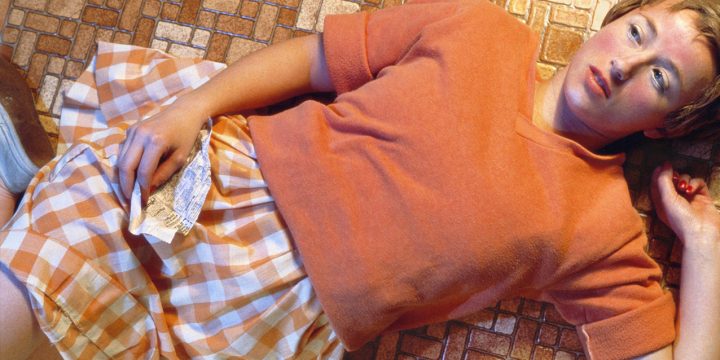
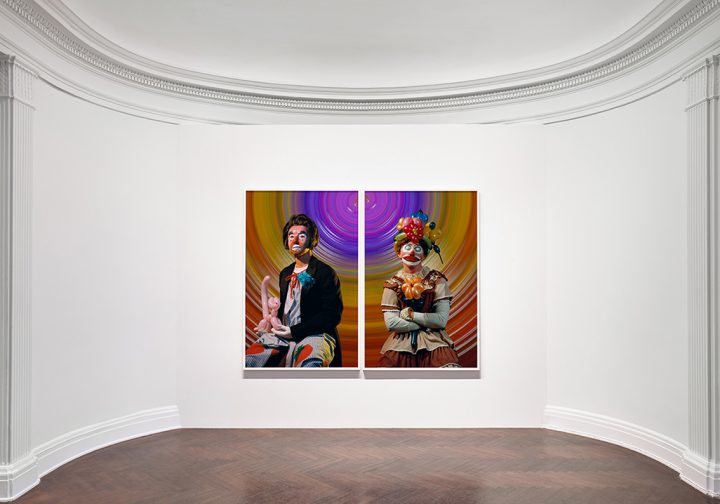
CMS: What is the importance of museums as important as the MoMA or David Museum decided to generate policies somehow to say, installatives or curatorial to provoke reflection and impact from the artistic field towards restrictive immigration measures?
CVF: Its symbolic importance. And for the most part, art is useful for that, besides having that symbolic value, acts as a demonstration of the values of the institution. Although It has probably not convinced anyone, no Trump voter at least, I think is right that the MoMA for example has taken that policies, where at least the general public understood the political position of the museum and they welcomed it with very well.
CMS: How and where is framed the Anish Kapoor’s action quoting to Joseph Beuys with a poster with Kapoor’s own image and the text “I Like America, but America Does not Like Me”, written in Antiqua-Fraktur typography Associated with Nazi propaganda?
CVF: It does not deserve any kind of comment, it does not impress me neither as an advertisement nor as a work of art. He will have done it in his free time.
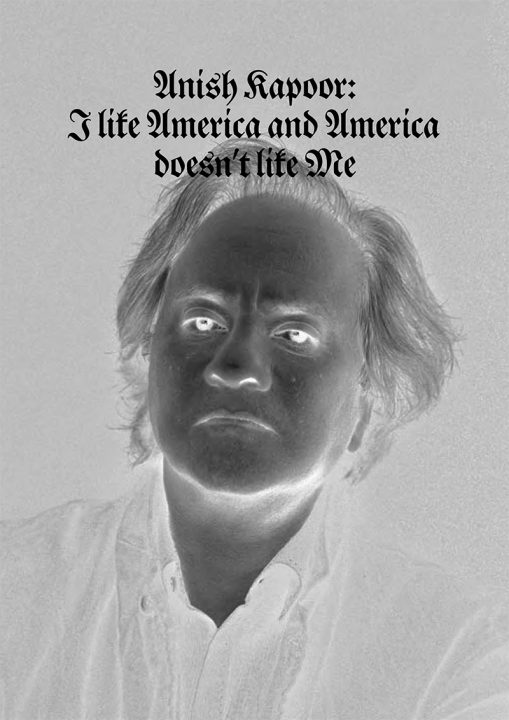
“Now art exists in a broader framework of meaning, which is completely different from the recent past; everything has a greater urgency. Every art piece, every artist today has a different meaning. Is necessary to think that the most basic human relationship has become re- meaning.”
CMS: What do you think will finally happen with Donald Trump’s plan to permanently eliminate the National Endowment for the Arts (NEA) and the National Endowment for the Humanities (NEH) from the national budget as part of a dramatic plan to reduce government spending?
CVF: Indeed, that is the plan announced by the president: cut the NEA, eliminate that budget. This is unlikely to happen, but for that, we have to mobilize a number of interests so that it does not happen. Never before has a president proposed to eliminate the NEA since it was founded, and that is where you can see where we are today. This policy is absurd under any point of view, in addition to the fact that it is a tiny budget within the US government.
CMS: In a recent article you mentioned that “…art has been kidnapped by Trump.” What do you mean with this kidnapping, it is in the sense of the symbolic or the institutional? Apart from fear and uncertainty without any doubt.
CVF: I think I was referring to that fear and uncertainty, to the fact that the meaning of everything is being changed. The kidnapping has been in symbolic terms of each artwork and the same exhibitions of each institution: a complete abduction of symbolic value. Now art exists in a broader framework of meaning, which is completely different from the recent past; everything has a greater urgency. Every art piece, every artist today has a different meaning. Is necessary to think that the most basic human relationship has become re- meaning.
CMS: I see that what could be called reality, in the present times is experiencing a kind of alteration. Where the axes by which individuals and societies were normally moving are changing dramatically, where subjects such as human rights, for example, that seemed already assimilated, are now having an unprecedented setback. In addition to what generates mass media, everything seems absurd, distant, or that will pass. Everything is accepted or remains indolent.
CVF: The new cultural themes are more urgent than we had just 6 or 9 months ago, political and social passivity is declining, particularly in the in the less affluent sectors. Frivolity does not have the same brightness that it had until recently.
I would say that we are perhaps entering a stage of greater seriousness by absolute necessity.
When there is crisis you have to start thinking correctly, because it is an emblematic moment. While there are a number of works that are not bad, but they are not good today, they at least have a reflection that moves them, and that is relatively new in a country and a scene that has been greatly benefited by creating objects of an absolute and declared emptiness.
I think this last kind of work, the Koons, the Murakamis, or the Hirsts, will remain because they are already there and the prices have too many zeros, but they will not have the same weight as before. I do not know what’s coming next, but I do know that kind of work has already gone down in history.
We are in a situation of tremendous instability, where every single morning we wake up with increasingly delirious news, and as cultural agents we will have to learn to function in a good way, produce, articulate and live with this environment, hoping to continue mobilizing to be able to stop this cultural, social and political absurdity.
Image 1: Art by Barbara Kruger for New York Magazine. Photography: Mark Peterson/Redux.
Image 2: Women’s March, Washington, D.C., January 21, 2017. Photography: Carolyn Cole/Los Angeles Times/TNS.
Image 3: Women´s March,Washington, D.C., January 21, 2017. Photography Robyn Beck/AFP/Getty Images.
Image 4: Sebastian Gorka, 2017. BBC
Image 5: Milo Yiannopoulos
Image 6: Liberty (Liberté), Puppies Puppies, 2016. Performance, Galerie Balice Hertling, Paris, France, July 7, 2016. Photography: Stephan Tanbin Sastrawidjaja
Image 7: Public Money, Cameron Rowland, 2017. Institutional investment in Social Impact Bond.
Image 8: Executive Function, Julien Nguyen, 2017. Collection of the artist; courtesy Neue Alte Brücke, Frankfurt and Stuart Shave/Modern Art, Londres. Photography: Bill Orcutt
Image 9: Still from A Very Long Line, 2016, Postcommodity. Courtesy the artists.
Image 10: Ian F. Svenonius’s “Censorship Now”, Frances Stark, for 2017 Whitney Biennial,Collection of the artist; courtesy Gavin Brown’s enterprise, New York. Photography: by Bill Orcutt
Image 11: Installation view of Real violence, Jordan Wolfson, for 2017 Whitney Biennial,Collection of the artist; courtesy David Zwirner, New York y Sadie Coles HQ, Londres.
Image 12: Trump the rat, inflatable designed by Jeffrey Bebee and comissioned by Bravin Lee Gallery, 2017.
Image 13: Layer for J20 Art Strike.
Image 14: Untitled #96, Cindy Sherman, 1981.
Image 15: Installation view of Once Upon a Time, Cindy Sherman, Mnuchin Gallery, NY, 2017.
Image 16: I like america and america doesn’t like me, Anish Kapoor, 2017.

 Español
Español